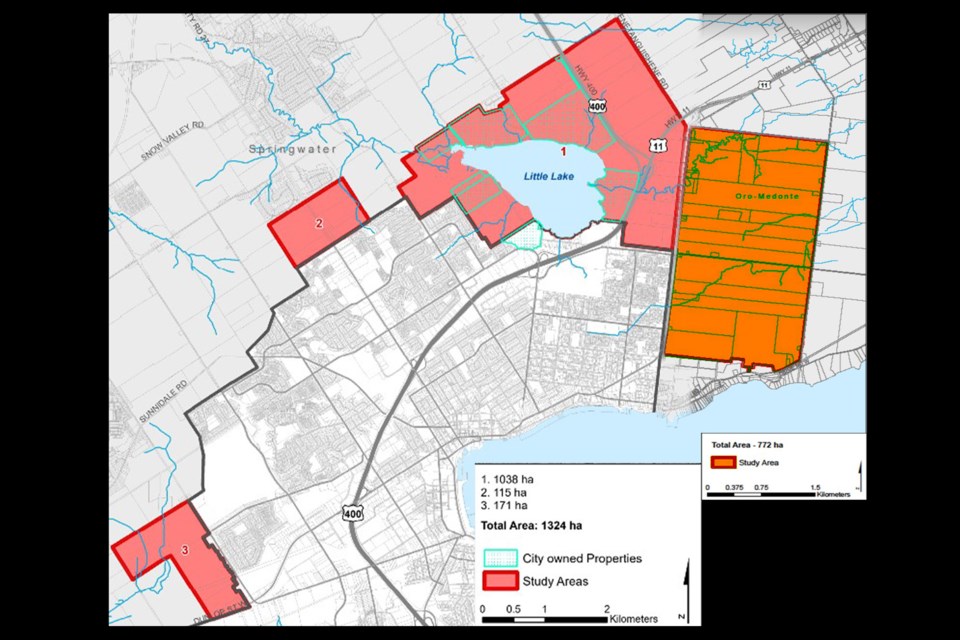Well, that ended rather quickly. I think the fidget spinner fad lasted longer.
Barrie’s boundary expansion plan collapsed just a month after it began, leaving a few bruised egos, some bad feelings and lots of questions in its wake.
Early in November, a provincial legislature standing committee on heritage, infrastructure and cultural policy held a session in Barrie. Ontario’s minister of municipal affairs, Paul Calandra, had asked the committee to also look at the issue of regional governance.
Mayor Alex Nuttall chose the occasion to make public Barrie’s hopes to annex around 2,200 hectares of neighbouring land in Springwater and Oro-Medonte. That seemed to come as shock to the surrounding municipalities, who apparently had been consulted behind closed doors, but weren’t given any notice everything was about to be made public.
I suspect the Springwater and Oro-Medonte council members got an earful from their residents because they quickly backed away from any further discussions.
For now, at least, any Barrie boundary expansions seem to be dead.
But it does leave questions. Was it a good idea? Does Barrie need the land to continue to prosper by providing a place for industry?
It’s impossible for the outside observer to know. Some local industry owners are saying they have to leave the city because there is no room for expansion, but there were almost no supporting documents for why Barrie needed as much land as it is seeking.
What we do know is that, just four years ago, Barrie had an outside consultant prepare an extensive Municipal Comprehensive Review Long-Term Urban Land Needs Study. That study said Barrie, at the time, had 536 hectares of vacant “employment lands.”
It also suggested an additional 116 hectares of employment land was required to accommodate forecast employment growth until 2041, all of which could be accommodated in the area annexed from Innisfil in 2010.
So how did we get from 116 hectares to 2,200 hectares, almost as much as the entire former chunk of Innisfil that Barrie took, in four years? Nothing has been made public.
To be fair, not all of the requested land is planned for development. A substantial chunk is around Little Lake and would continue to be parkland. In fact, the city already owns much of it, although it is now in Springwater.
But about one-third of the land from Innisfil was also environmentally protected from development, so the comparison still stands.
That so much land was on the table has raised speculation much of it will end up being used for housing, not industry. Once again, that municipal comprehensive review said the land annexed from Innisfil, along with intensification, could accommodate a population of 253,000 by 2041 — and still leave a lot of land still to be developed after that.
For now, of course, it’s a moot point with the expansion plans seemingly dead in the water.
But that’s not to say the idea couldn’t get new life, especially at a time when there is so much emphasis on getting new housing built. The province has absolute control over municipal matters and Ontario governments have shown no hesitation to act over the years. The Mike Harris government forced numerous amalgamations of municipalities and the current Doug Ford government changed Toronto’s ward boundaries in the middle of an election.
And, of course, the Dalton McGuinty government took those 2,266 hectares from Innisfil to accommodate Barrie’s growth, although, I’ll point out, there were thousands of pages of supporting documents and numerous meetings at the time.
But there is another factor to consider: When the Liberals forced that 2010 annexation, Barrie was its own provincial riding, coincidentally held by the Liberals. Innisfil was in a Tory riding. Barrie is now split in two, with a large part of each riding in the surrounding townships.
Ford’s Conservatives placed behind the Liberals among Barrie voters in the most recent provincial election. Barrie-Springwater-Oro-Medonte MPP Doug Downey owes his win to the fact he won handily in the surrounding townships of, yup, Springwater and Oro-Medonte.
It’s hard to believe the Ford government would risk irritating those voters ahead of the next provincial election.
Just look at what happened with the Greenbelt.
Barry Ward is a veteran editor and journalist who also served on Barrie city council for 22 years. Fair Comment appears regularly in BarrieToday.



